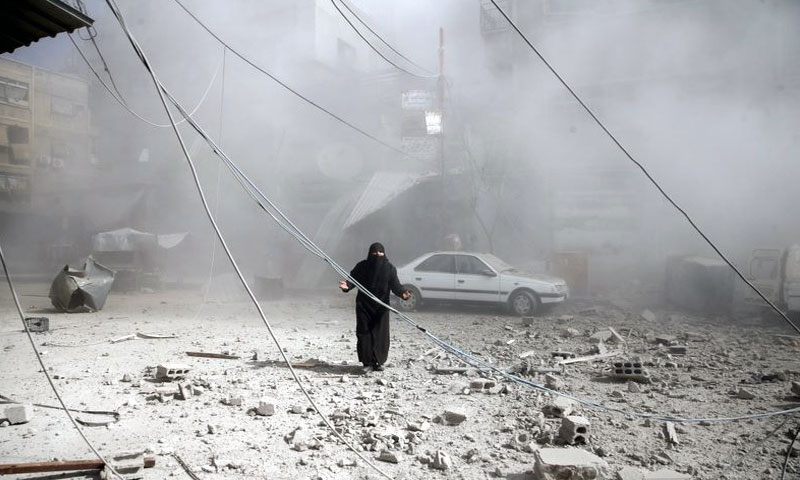Social media has been striving, noisily, with the names and pictures of the victims; those who died in the shelling that targeted eastern Ghouta last week. The newest frenzy of shelling was described by some as the most violent in two years, plaguing the area’s towns and cities without exceptions.
The Civil Defense organization’s statistics, covering Damascus and its countryside, report that the shelling toll has resulted, so far, in 845 injured people, most of whom are children and women. While the local councils are clearing off the rubbles of the destroyed houses, the specific number of casualties is not yet known, for a massive number of the injured people are in a critical state, amidst medical resources wan in the face of the disaster that befell the besieged areas in eastern Damascus.
Military escalation did not satisfy the Syrian regime, which also closed the only trade route to Eastern Ghouta. Ismail al-Munajed, the Director of the Consumer Organization in the city of Hamouriyah, told Enab Baladi that Assad’s forces have stopped, on Friday, February 9, the merchant Mohi Eddin Almanffosh from admitting goods into Ghouta, pointing out that the merchant has also carried the forces’ threats to Ghouta promising a continuance shelling.
There are no official statements about the reason or the objectives of the escalated shelling; however, activists from the area believe that the campaign is a response to the failure of the National Syrian Dialogue Congress in Sochi, which took place late in January.
Battles in the East and the West
With the persistent shelling, the Syrian government media outlets have been reporting a continuing progress for Assad’s forces in the city of Arbin in the western part of Ghouta; they have also stated that the progressing forces have reached areas in the city of Harasta.
For its part, the opposition have denied Assad’s forces progress, and the Director of “Faylaq al-Rahman’s” Media Office, Mouafaq Abu Gassan, confirmed that the opposition factions are still preserving their military gains, attained in their last attack at the borders of the Vehicles Management Base (VMB), in December 2017.
In the same context, the Syrian regime has reported another progress in eastern Ghouta, in the al-Marj area. About this, governmental media outlets have reported that Assad’s forces have progressed at the Hazarma and Hawsh al-Dawahra axes.
On its platforms, “Jaysh al-Islam” faction, in control of the area, published a census in which it reported that the casualties of Assad’s forces for the past week on the Hawsh al-Dawahra front are eight officers, one of whom is a colonel, out of 68 members who died in the confrontations, in addition to destroying and the malfunction of a number of military vehicles.
The military operations which the Syrian regime launched in al-Marj to isolate the town of Al-Nashabiyah and to control the village of Tal Farzat, are no less important the Harasta battles, that are taking place in the surrounding of the Vehicles Management Base, which the opposition factions have circled at three directions, after the Assad’s forces managed to open a road for supplies and break the siege imposed over it.
Unprecedented Shelling since 2015
The casualties of the shelling targeting Eastern Ghouta, since the fourth of February, reached 160 people.
According to “Ghouta Media Center,” over 809 people died due to the Assad’s forces bombardment of Ghouta since 14 November 2017 to 9 February 2018. Deaths among children reached 188 and 111 among women within the same timeline.
The center documented 1405 air raids that focused on Arbin and Harasta and affected Duma, Jisreen, Beit Sawa, Hamouriyah and Saqba, in addition to more than ten thousand artillery shells, while there are no statics about the percentage of destruction of houses, which cannot be counted due to the intensified shelling, according to Enab Baladi’s reporter in Ghouta.
The reporter confirmed that the area is witnessing a shelling that in its cruelty cannot resemble but the violence of 2015, through which it suffered hundreds of air raids.











